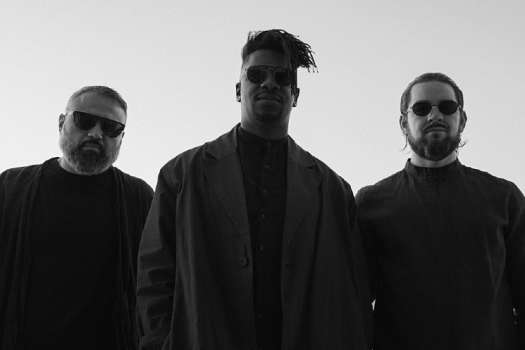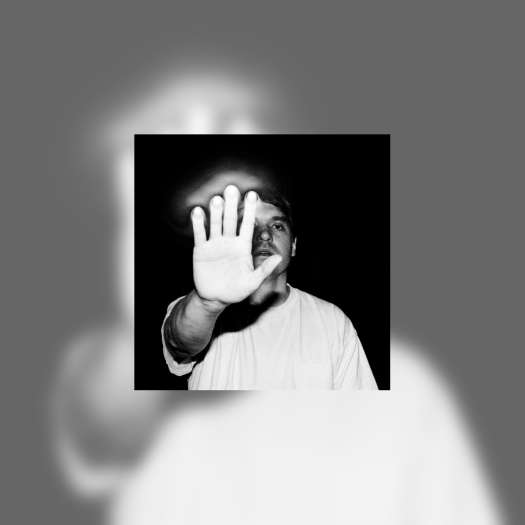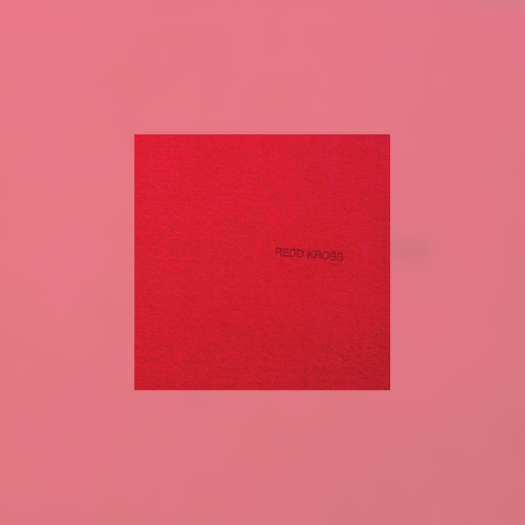Belgian quintet Amenra have churned out crushing ceremonies since 1999, evidencing their work ethic with a sizeable discography and founding the DIY collective Church of Ra. Even so, it seems only attentive post-metal fans have felt Amenra's subterranean vibrations. Their Relapse Records debut, De Doorn, looks to rectify that issue. Amenra's seventh album refines and evolves the band's core tenets — a rite of passage for the long-suffering post-metal shamans.
De Doorn effectively purges the pain that defined Amenra's past six albums in their Mass series. Indeed, the translated lyrics of single "De Evenmens" frame the journey toward death as the inevitable freeing of the spirit: "Fare thee well / My dying body / My dying heart / The days, they depart." Even though these songs originated from impromptu "fire rituals" Amenra observed during the past three years, "De Evenmens'' counterbalances glacial viscera with groovier, even hookier arrangements.
Hummable riffs notwithstanding, Amenra's commitment to obscurity hasn't diminished. De Doorn is the band's first to feature lyrics entirely in Dutch. Though indecipherable to most people outside of the Netherlands, the vocals transcend language barriers by harnessing transcendental spiritual energy.
Opening cut "Ogentroost" reestablishes Amenra's blend heavy music and religious ecstasy, cutting expertly-built tension with deafening dynamic shifts. Almost half of the song comprises cavernous ambient drones and spoken word, meticulously unveiling the song's ominous riff before the whole band drops like an exploding depth charge. Colin H. van Eeckhout's piercing screams and the massive yet nuanced riffs of Mathieu J. Vandekerckhove and Lennart Bossu remain as resonant as ever, but the guest vocals from Oathbreaker's Caro Tanghe become the real show stopper.
A fellow member of the Church of Ra, Tanghe sounds right at home as she augments De Doorn's atmosphere and melodies with a third vocal approach to round off the screams and speaking. She and Eeckhout trade poetic stanzas over the dreary, foreboding and remarkably transfixing ambient piece "De Dood In Bloei," but the former's influence seems to empower the latter to explore his own melodic facets. Though Amenra still revel in soothing listeners with whispery soundscapes before smashing them with thundering dirges, De Doorn offers much more wiggle room between the two extremes.
The final moments of "Het Gloren" feature a classic Amenra quiet-to-loud jump scare, but the track displays many shades of grey to smooth out stark contrasts. Gradually manifesting a guitar motif this might seem like post-metal 101, but Amenra deal their densely harmonic soundscape like a hand of cards. Even if switch-ups amount to inconspicuous vocal inflections or chord changes, Amenra intensify their impact by letting the tempo ebb and flow ever so slightly during each passage. The band's respect for minutia and taste as well as scope helps closer "Voor Immer" reach an unprecedented payoff after its eight-minute intro.
The song's clean guitar chords loop like an Om chant, guided by stoic spoken word into a sound bath of vocal drones and dancing arpeggios. It's hardly patience-testing, as the long-winded crescendo acts like a camera slowly panning out over a vista of harmonic, pulsing hypnosis. The album's finale acts as an emphatic step onto a precipice of levelling distortion, rather than a jarring juxtaposition. It's a true masterclass of ambient doom from one of the best bands to do it.
Whether they dropkick souls into oblivion or gently open third eyes, these guys have honed their foundations and expanded their horizons. De Doorn is not only a continuation, but also a rebirth of Amenra's pilgrimage of apocalyptic heaviness.
(Relapse)De Doorn effectively purges the pain that defined Amenra's past six albums in their Mass series. Indeed, the translated lyrics of single "De Evenmens" frame the journey toward death as the inevitable freeing of the spirit: "Fare thee well / My dying body / My dying heart / The days, they depart." Even though these songs originated from impromptu "fire rituals" Amenra observed during the past three years, "De Evenmens'' counterbalances glacial viscera with groovier, even hookier arrangements.
Hummable riffs notwithstanding, Amenra's commitment to obscurity hasn't diminished. De Doorn is the band's first to feature lyrics entirely in Dutch. Though indecipherable to most people outside of the Netherlands, the vocals transcend language barriers by harnessing transcendental spiritual energy.
Opening cut "Ogentroost" reestablishes Amenra's blend heavy music and religious ecstasy, cutting expertly-built tension with deafening dynamic shifts. Almost half of the song comprises cavernous ambient drones and spoken word, meticulously unveiling the song's ominous riff before the whole band drops like an exploding depth charge. Colin H. van Eeckhout's piercing screams and the massive yet nuanced riffs of Mathieu J. Vandekerckhove and Lennart Bossu remain as resonant as ever, but the guest vocals from Oathbreaker's Caro Tanghe become the real show stopper.
A fellow member of the Church of Ra, Tanghe sounds right at home as she augments De Doorn's atmosphere and melodies with a third vocal approach to round off the screams and speaking. She and Eeckhout trade poetic stanzas over the dreary, foreboding and remarkably transfixing ambient piece "De Dood In Bloei," but the former's influence seems to empower the latter to explore his own melodic facets. Though Amenra still revel in soothing listeners with whispery soundscapes before smashing them with thundering dirges, De Doorn offers much more wiggle room between the two extremes.
The final moments of "Het Gloren" feature a classic Amenra quiet-to-loud jump scare, but the track displays many shades of grey to smooth out stark contrasts. Gradually manifesting a guitar motif this might seem like post-metal 101, but Amenra deal their densely harmonic soundscape like a hand of cards. Even if switch-ups amount to inconspicuous vocal inflections or chord changes, Amenra intensify their impact by letting the tempo ebb and flow ever so slightly during each passage. The band's respect for minutia and taste as well as scope helps closer "Voor Immer" reach an unprecedented payoff after its eight-minute intro.
The song's clean guitar chords loop like an Om chant, guided by stoic spoken word into a sound bath of vocal drones and dancing arpeggios. It's hardly patience-testing, as the long-winded crescendo acts like a camera slowly panning out over a vista of harmonic, pulsing hypnosis. The album's finale acts as an emphatic step onto a precipice of levelling distortion, rather than a jarring juxtaposition. It's a true masterclass of ambient doom from one of the best bands to do it.
Whether they dropkick souls into oblivion or gently open third eyes, these guys have honed their foundations and expanded their horizons. De Doorn is not only a continuation, but also a rebirth of Amenra's pilgrimage of apocalyptic heaviness.




